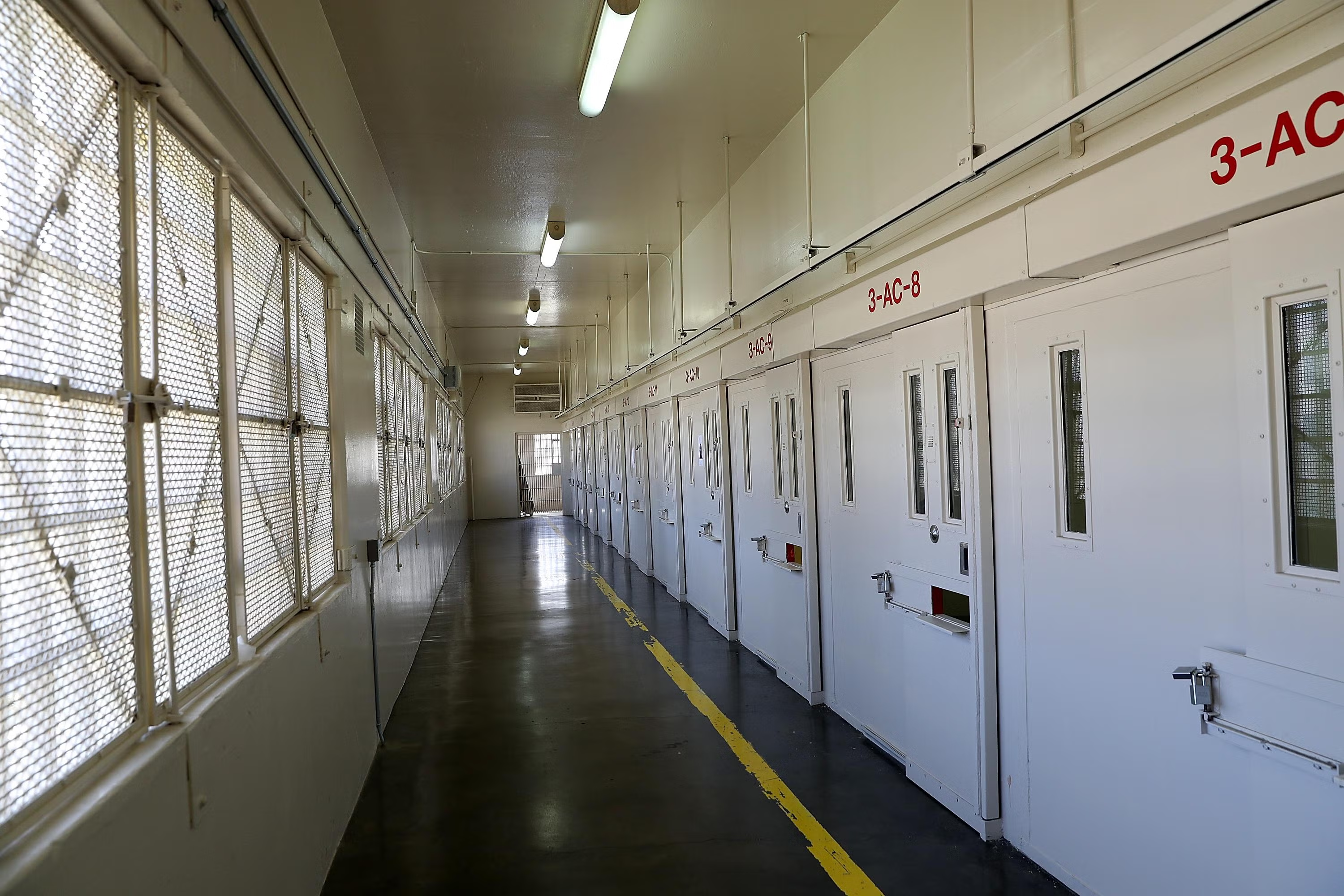A California death-row inmate died in his cell on Tuesday, three days after prison officials placed him on suicide watch. The former sausage-factory owner—he’s known as the “Sausage King”—was awaiting punishment for the murder of three meat inspectors in 2000. What happens when an inmate is put on suicide watch?
He’s put in an observation room and kept away from dangerous objects. Suicide watch is mostly designed to prevent hanging, which is far and away the most common suicide method in prisons and hospitals. An observation room might have little more than a mattress on the floor. Any stray bits of fabric could be used as a noose: Some states make sure the inmate sleeps with an extra-thick blanket that can’t be tied or torn into strips. In extreme cases, a prisoner may be undressed and given a paper gown.
Even if a suicidal prisoner does manage to tie something around his neck, he won’t be able to hang himself unless he has somewhere to tie the other end. Rooms are designed without any protrusions from the ceiling, walls, or furniture. Window cages, sprinkler heads, and bunk handles all pose problems. Even bars set low to the ground could be dangerous—an inmate might get on his knees and strangle himself by thrusting his weight forward all at once.
Many suicide-watch rooms have 24-hour video surveillance, but prison staff must also perform routine, in-person checks. Depending on the level of risk—as determined by prison psychiatrists—nurses or corrections officers might drop by once per half-hour or 15 minutes on average. (Staffers mix up the schedule so the prisoner doesn’t know when they’re coming.) At each visit, the prison employee should verify that the inmate is alive and breathing and then mark their observations on a timesheet. Some institutions—including the Federal Bureau of Prisons—have made fellow inmates responsible for these checks. One recent study found that “inmate observers” were more effective than authority figures at calming down a prisoner on suicide watch. (Using inmate observers also saves the prison a lot of money.)
Intermittent checks may not give staffers enough time to stop a suicide attempt, since it takes only four or five minutes to hang yourself. In some states, inmates deemed to be at “acute risk” are given continuous supervision—someone is watching them every minute of every day. This designation is typically reserved for those who seem both inclined to commit suicide and temporarily unable to control their actions. In a hospital setting, the most extreme situations may call for a “sitter” who will remain within arm’s reach of the patient for the duration of the watch.
If the suicide-watch system fails, a prison may be liable for civil damages. The institution must have a reasonable method for assessing risk and preventing self-injury. For example, relevant members of the prison staff should have sufficient training to deal with a suicide attempt. They should also make a concerted effort to keep dangerous objects out of the hands of the inmates.
Got a question about today’s news? Ask the Explainer.
Explainer thanks Lanny Berman of the American Association of Suicidology.
